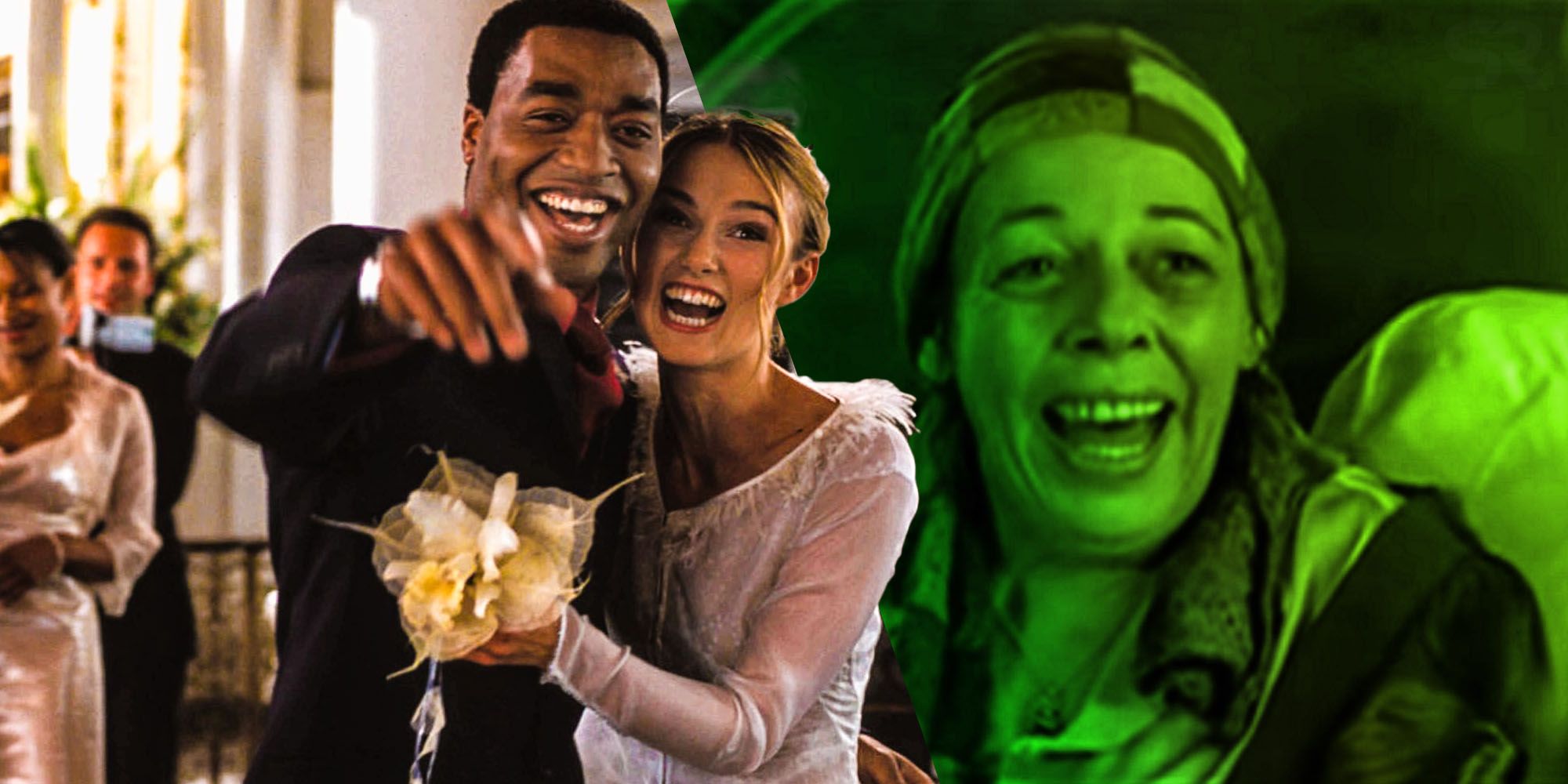Love Actually might be a classic rom-com, but the movie was originally slated to include an LGBTQ+ love story with a moving coda, so why was this stellar subplot excised from the finished film? Released in 2003, Love Actually was a Christmas-centric rom-com from one of the masters of the genre, Four Weddings and A Funeral scribe Richard Curtis.
By the release of Love Actually, Curtis’ earlier rom-coms, including the critically-acclaimed Bridget Jones’ Diary and Notting Hill, were huge hits, cementing his status alongside Nora Ephron and Nancy Meyers as one of the pre-eminent creators of witty Hollywood confectionery. However, Curtis’ movies have also been praised for their attempts at diversity, with Notting Hill, Yesterday, Four Weddings and A Funeral featuring characters of different races, ethnicities, and sexual orientations in their main cast.
Unfortunately, though, not all of Curtis’ commendable attempts at including diversity in his films made it to the big screen intact. Take, for example, a poignant subplot from Love Actually that would have centered on a lesbian couple coping with a terminal illness. The subject matter sounds heavy for a movie about love and Christmas, but Curtis is famous for deftly weaving more dramatic, tragic subject matter into his love stories than most rom-com writers (as evidenced by the title of Four Weddings and A Funeral). Despite this, Love Actually controversially cut its most diverse, progressive storyline not because it depicted a lesbian couple or because one of them died of cancer, but because story edits rendered their characters unmoored in the larger story.
The Richard Curtis movie's knotty plot followed numerous groups of seemingly unrelated characters whose disparate stories eventually all interlink. The scope of their tales ranges from a goofy tourist looking to charm American girls to the British prime minister falling for a junior member of his staff. Among these stories was the sad tale of Karen (Emma Thompson), a stay-at-home mom devastated to discover her husband is cheating on her. Karen originally had an early scene wherein she gave the stern, unreasonable headmistress of her child’s school a well-deserved dressing down. Then, in a perfect (and brutally sad) encapsulation of the movie’s broader point—that we can never know how our actions affect the lives of others—Love Actually would have revealed that Anne Reid’s mean-spirited schoolmistress was not being cruel for no reason.
It turned out, the headmistress was coping with losing her life partner, Frances De La Tour’s Geraldine, to cancer, as proven by the deleted scenes of the Richard Curtis rom-com. It was a tragic and traumatic revelation that re-contextualizes the earlier interaction between her and Karen, and despite how sad the moment was, it would have been an impressive inclusion in 2003 when same-sex relationships had very little onscreen representation (and even less that didn’t rely on outdated stereotypes, which Love Actually’s excised subplot avoided). However, with Karen's dressing down of the principal deleted, the scene humanizing her had no place in the story and was, as such, also cut. Looking back on Love Actually, the decision feels like it let down potential LGBTQ+ audiences, particularly when the film’s runtime did find time to include the infamously ill-judged subplot wherein The Walking Dead’s Andrew Lincoln essentially attempts to steal a-then 18-year-old Kiera Knightley from his supposed best friend.


